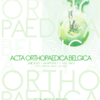Radial tuberosity anatomy in intramedullar repair of distal biceps tendon ruptures. A radiological study
biceps tendon repair; intramedullar; computed tomography; anatomical; cortex
Published online: Aug 23 2022
Abstract
The aim of this study was to measure cortex thickness and medullar canal width of the bicipital tuberosity, to evaluate the accessibility of a intramedullar fixation device and the resistance to pullout strengths of the anterior cortex. The final objective was to determine the length of tendon ingrowth size that will be expected when using this surgical technique.
A total of 144 computer tomography images of the proximal radius were used. Bone thickness of the anterior and posterior cortex and medullar canal size were measured. The possible ingrowth of the tendon was measured both for an anatomical and non- anatomical reinsertion. Statistical and concordance analyses of results were performed.
The average width of the medullar canal was 8,7mm proximal, 7,9mm distal and 7,7mm at the tuberosity. The average posterior and anterior cortex measured respectively 2,5mm and 2,9mm proximal, 3,2mm and 3,2mm distal and 2,8mm and 1,9mm at the radial tuberosity. The possible non-anatomical ingrowth was 7,6 mm on average and the possible anatomical ingrowth was 7,6mm on average. The radial tuberosity anatomy can accommodate the new distal biceps fixation device. The anterior cortex on which the new device relies for support has a similar thickness as the posterior cortex used in bicortical fixation devices which may suggest similar resistance to pull-out strengths. The availability for intra-osseous fixation of the tendon stump may avoids tendon gapping. The intra-osseous length for the tendon stump surpassed reported tendon slippage during mobilization and active contraction of the distal biceps tendon.
